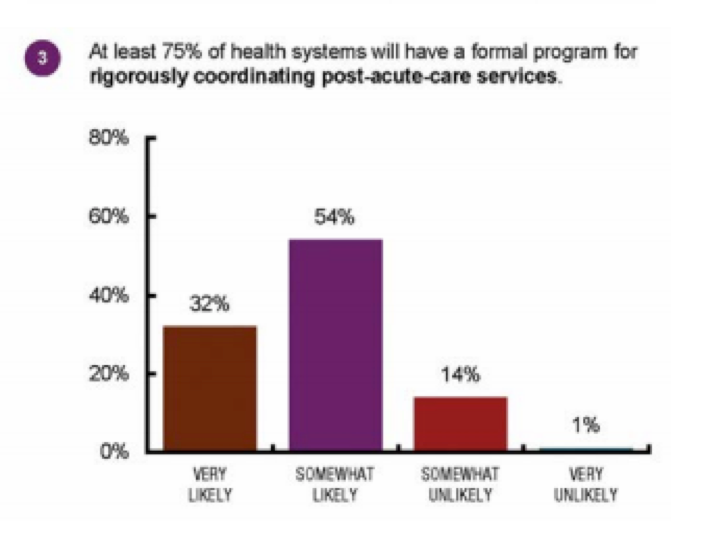Article
3 Population Health Drivers Pharmacists Should Know
Author(s):
As population health management becomes increasingly critical, health-system pharmacists should reacquaint themselves with the factors driving patient outcomes.
As population health management becomes increasingly critical, health-system pharmacists should reacquaint themselves with the factors driving patient outcomes.
The Pharmacy Forecast 2016-2020 published by the American Society of Health-System Pharmacists (ASHP) Foundation identifies population health management as one of the key trends that will define the scope of health-system pharmacy practice over the next 4 years.
Optimizing population health requires health systems to recognize that their role has moved beyond providing immediate sickness care and now involves evaluating many aspects of a patient’s lifestyle in order to be proactive about preventing the need for hospital admissions and readmissions.
During a session at the 2015 ASHP Midyear Clinical Meeting discussing the Pharmacy Forecast, panelist Cynthia Litt Deculus, MPh, noted the business implications of not properly managing population health. She noted that health systems are responsible for patient outcomes regardless of where they receive care after leaving the hospital.
“Take advantage of relationships with physicians to create best practices,” she advised. “We should be very close with our contract environment”
Pharmacy Forecast advisory board member and session panelist James Hoffman, PharmD, MS, FASHP, told Pharmacy Times that “it’s important for pharmacists to get engaged and be involved with those teams and invest in this area [of population health] to really make sure medication issues are thought through in a thorough and complete way.”
In a separate analysis, researchers at the University of Wisconsin Population Health Institute studied various factors driving health outcomes.
They felt that the following 3 factors were areas where pharmacist intervention can play a larger role in enhancing population health care:
Modifiable Patient Behaviors
Heart disease, cancer, lung disease, and stroke are holding their positions as the leading causes of death in the United States. Pharmacists can play a vital role in counseling patients about the causes behind these chronic diseases.
Modifiable patient behaviors that health-system pharmacists should consider when counseling all populations include tobacco use, diet and exercise, alcohol use, sexual behavior, and driving.
With respect to smoking, the US Centers for Disease Control and Prevention estimates that 70% of US adult smokers want to quit smoking, and millions more have already attempted to do so. This willingness presents a patient counseling opportunity for pharmacists, who are in a pivotal position to assist patients in determining the most effective smoking cessation method for them.
Pharmacists can also play a role in addressing barriers for patients trying to maintain a healthy diet and exercise regularly.
Medication Management
One-fifth of health outcomes can be attributed to a patient’s access to care and quality of care, the University of Wisconsin study concluded.
Effective medication management is a cornerstone of both care access and quality, so it will “be an essential element of population health,” the Pharmacy Forecast predicts.
“As the medication expert, pharmacists on the health care team can optimize medication use, reduce overall costs, and ultimately improve patient outcomes through effective medication management…in a way that has a great impact on the patients and populations they serve,” wrote David A. South, PharmD, and Lindsey B. Amerine, PharmD, MS, BCPS.
Meanwhile, health systems “have a renewed interest in assuring the quality of care provided in lower-cost, post-acute care settings such as skilled nursing facilities, home care, and long-term care,” the Pharmacy Forecast noted.
In the Pharmacy Forecast survey, 86% of respondent pharmacists predicted that at least 75% of health systems will have a formal program for rigorously coordinating post-acute care services by 2020.

Social and Economic Environments
According to a 2002 Institute of Medicine report concerning the future of public health in the 21st century, the “greatest advancement in understanding the factors that shape population health over the last 2 decades have been the identification of social and behavioral conditions that influence morbidity, morality, and functioning.”
Education, employment, and isolation are all social and economic factors that can affect patient health and particularly contribute to medication adherence issues.
Pharmacy Times Health-System Edition Editor Stephen Eckel PharmD, MHA, BCPS, FCCP, FASHP, FAPhA, believes the health-system pharmacist’s role in supporting medication adherence includes follow-up phone calls and educational outreach to circumvent medication knowledge barriers.
One strategic recommendation offered by the Pharmacy Forecast with respect to population health is to “increase pharmacist involvement on services that facilitate patient empowerment and where medication adherence is clearly linked to outcomes.”





